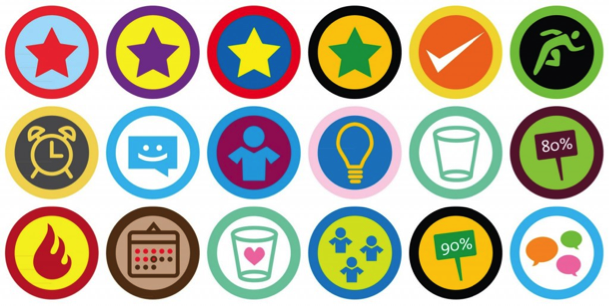
When was the last time you looked at your resume? Pull it up on your screen and take a good look—it may be on the verge of becoming an anachronism.
Here’s an opportunity for you to explore the resume of the future by earning some 21st century credentials in strategic foresight (a.k.a. futures studies) as applied to museums. CFM is launching a pilot project to explore the credentialing systems than may underpin the resume of the future. You can volunteer as one of our “test pilots,” and sign up to work your way through an online curriculum of futures-related content in order to earn a digital badge issued by the Alliance.
Digital badging is one form of “micro-credentialing”—granting credits for learning drawn from a wide variety of sources, which can include a mix of face-to-face classroom learning, on-line coursework, self-administered exams and real-world experience. CFM is dabbling with digital badging for two reasons:
- Micro-credentialing in general, with digital badging as one example, is a trend that may change the landscape of education by destabilizing the economics of traditional degrees. In the process, it creates new economic opportunities in the educational ecosystem, opportunities that museums may be particularly well-suited to exploit.
- Museum professionals and professionals-in-training are struggling with how to obtain and maintain relevant, credible training in a manner that is affordable and gives a good return on investment. Our members have been telling AAM for years that they want us to provide credentialing for individuals, not just institutions (i.e., accreditation). To respond to this need, we have to find a way to provide training in a way that can be scaled to serve the entire museum field in the US, and potentially an international audience. Digital badging might fill the bill.
The trend towards micro-credentialing is important to you, personally, because:
- If you are looking for your first job in a museum, you need credible ways to distinguish your c.v. from those of the other 300 people applying for any given position;
- If you are a current museum professional, you need ways to keep your resume fresh and up to date, even though you may not have the time or money to go “back to school” for yet another degree;
- If you are a manager or HR specialist, you need to learn how to assess the resumes of candidates who are embracing new forms of training;
- If you are an independent professional or work for a consulting firm, you can benefit from adding to the suite of knowledge and services you can offer clients.
This trend is important to museums because micro-credentialing programs are hungry for content, and museums are all about content. The resources your museum provides—face-to-face training programs, including workshops and internships; digital learning assets including images, video, fact sheets, study guides or curricula—are ripe for incorporation into a micro-credentialing program, whether the program is offered by your museum or another organization.
What is driving the rise of fragmented, distributed credentials? Take a look at these two sobering statistics about the economy of higher education:
- Young Americans are graduating college with an average student loan debt of nearly $27,000. Between 2004 and 2009, only thirty-seven percent of federal student loan borrowers made timely payments without postponing payments or becoming delinquent.
- Fifty-three percent of recent college graduates are unemployed or under-employed (i.e., in a job that doesn’t actually require that expensive bachelor’s degree).
Add to this the fact that, depending on the field in question, the specific knowledge imparted by a given course of study could be obsolete soon after a student graduates, and the traditional four year degree starts to look like a really bad ROI.
What’s the alternative, though? What would your resume say if it didn’t lead off with “B.A., Major Prestigious University, cum laude, 2010; M.A., Yet Another Major Prestigious University, 2013 (thesis title “On the Metadynamics of Museum Interpretive Dialectics and Gendered Power Structures”)?
In the future, your digital resume may look something like this:
Each “badge” on this resume would link to a description of the skill or accomplishment it represents, and documentation of what a learner did to earn this micro-credential. One badge might represent your completion of an on-line course on collections management. One might represent your packing and shipping skills acquired via a workshop you took at the last museum conference and an internship. Yet another documents the projects you completed as a volunteer at the Major Prestigious Museum.
Museums are starting to experiment with digital badging, encouraged by the resources being provided by organizations such as the Mozilla, Gates and McArthur Foundations, and the encouragement of the US Department of Education. I recommend this recent guest post by Ed Rodley for an overview of some of the museum badging projects underway now.
This CFM project is a chance for you, and your museum, to learn more about digital badging, and how it might work for you. It is also a chance for you to give feedback to the Alliance about whether this is a good way for us to provide credentialing to the field on this and other subjects.
If you want to learn more about the project, read this description. If you want to participate as a test pilot in the project over the coming months, email Vanessa Jones, project coordinator. Participant slots are limited, and will be filled on a first-come, first-serve basis.
I look forward to the chance to help you add a “museum futurist” badge to your resume.
This project is made possible by the generous support of LearningTimes, which is donating the use of its BadgeStack for our pilot project, and by an innovation grant from the American Society of Association Executives.









